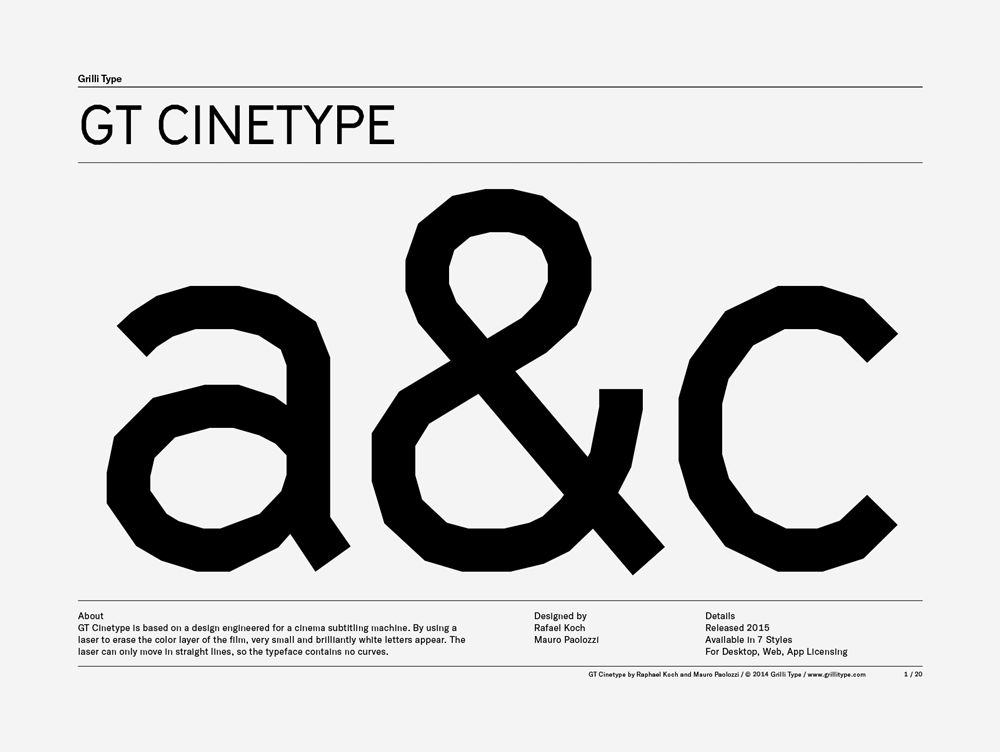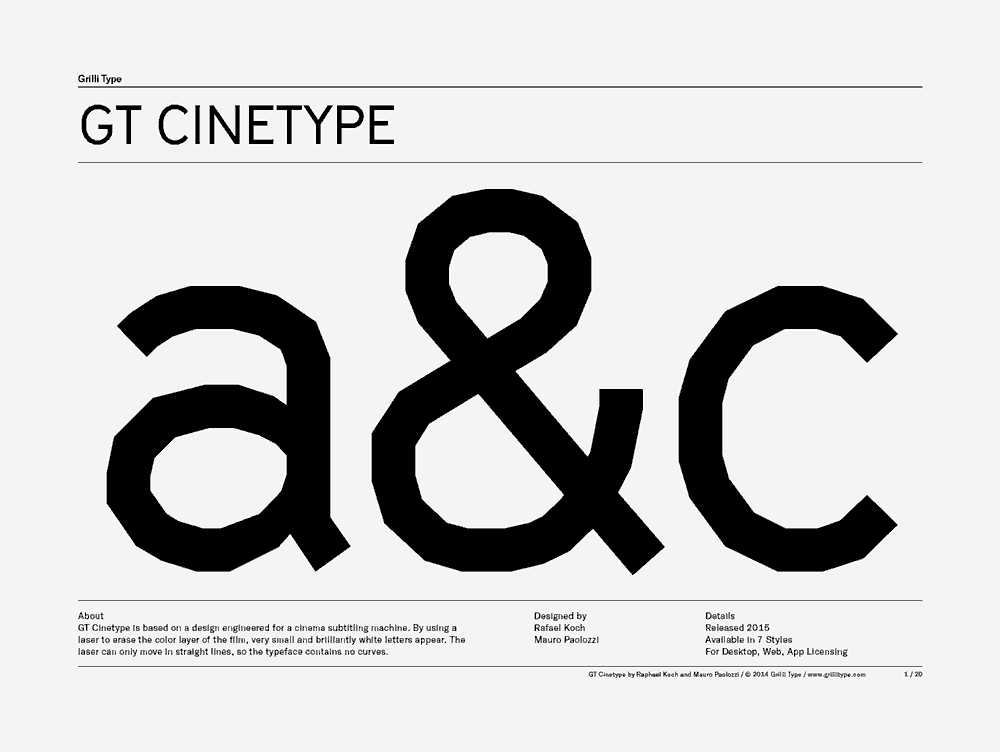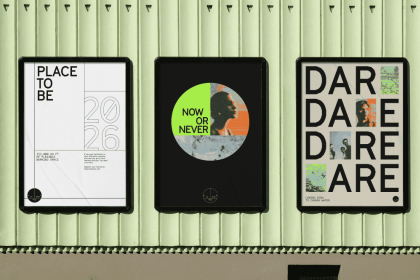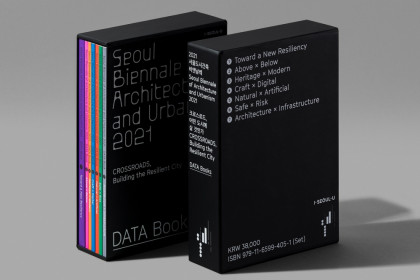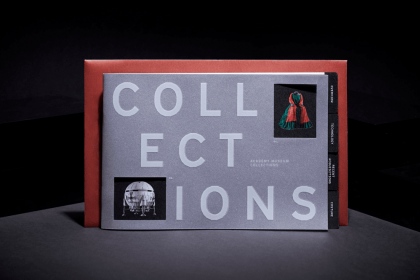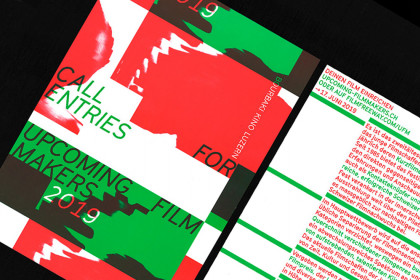GT Cinetype
Family overview
- Light Italic
- Regular Italic
- Bold Italic
- Mono
- LightThe Blair Witch Project 1999 by Daniel Myrick & Eduardo Sánchez with Heather Donahue, Michael C. Williams, Joshua Leonard
- Light ItalicWrath of Khan 1982 by Nicholas Meyer with William Shatner, Leonard Nimoy, DeForest Kelley
- RegularBack to the Future 1985 by Robert Zemeckis with Michael J. Fox, Christopher Lloyd, Lea Thompson
- Regular ItalicThe Toxic Avenger 1984 by Michael Herz & Lloyd Kaufman with Andree Maranda, Mitch Cohen, Jennifer Babtist
- BoldEternal Sunshine of the Spotless Mind 2004 by Michel Gondry with Jim Carrey, Kate Winslet, Tom Wilkinson
- Bold ItalicPulp Fiction 1994 by Quentin Tarantino with John Travolta, Uma Thurman, Samuel L. Jackson
- MonoRaiders of the Lost Ark 1981 by Steven Spielberg with Harrison Ford, Karen Allen, Paul Freeman
- Settings
Typeface information
GT Cinetype is based on a design engineered for a cinema subtitling machine. By using a laser to erase the color layer of the film, very small and brilliantly white letters appear. The laser can only move in straight lines, so the typeface contains no curves.
Typeface features
OpenType features enable smart typography. You can use these features in most Desktop applications, on the web, and in your mobile apps. Each typeface contains different features. Below are the most important features included in GT Cinetype’s fonts:
- CASE
- Case sensitive forms
(ROBOCOP)
- ONUM
- Oldstyle figures
10.03.1985
Typeface Minisite
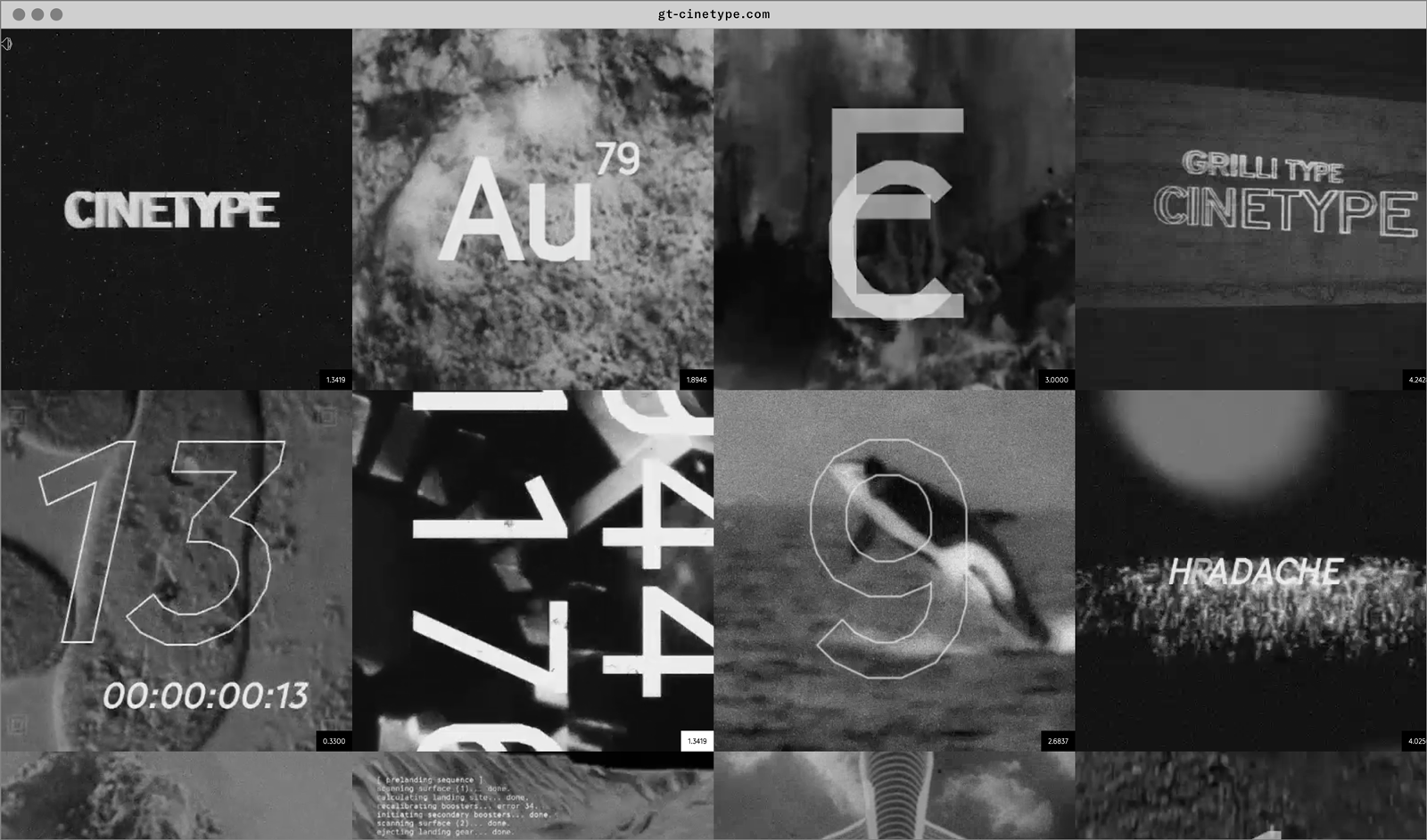
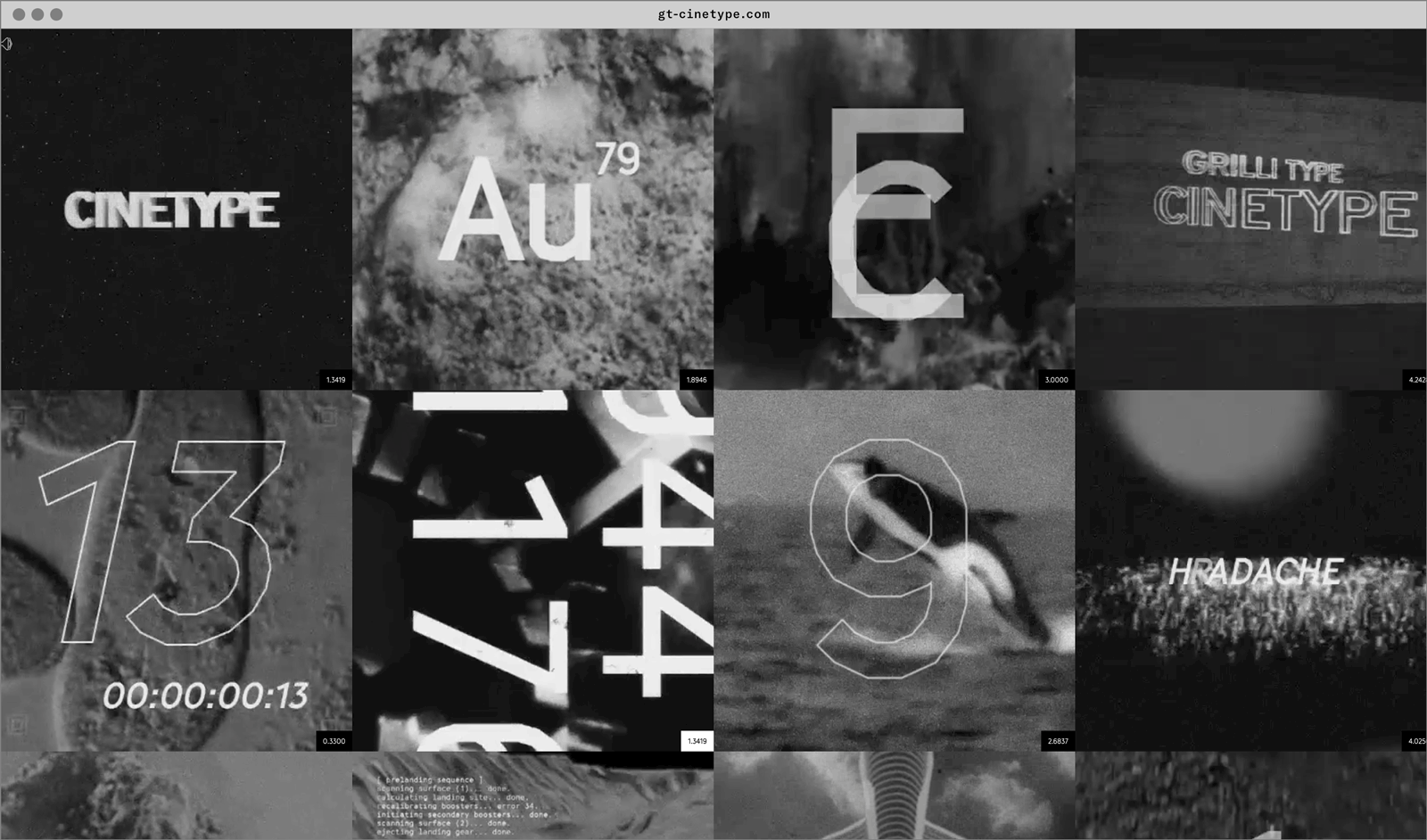
- Visit the GT Cinetype minisite to discover more about the typeface family’s history and design concept.
GT Cinetype in use
